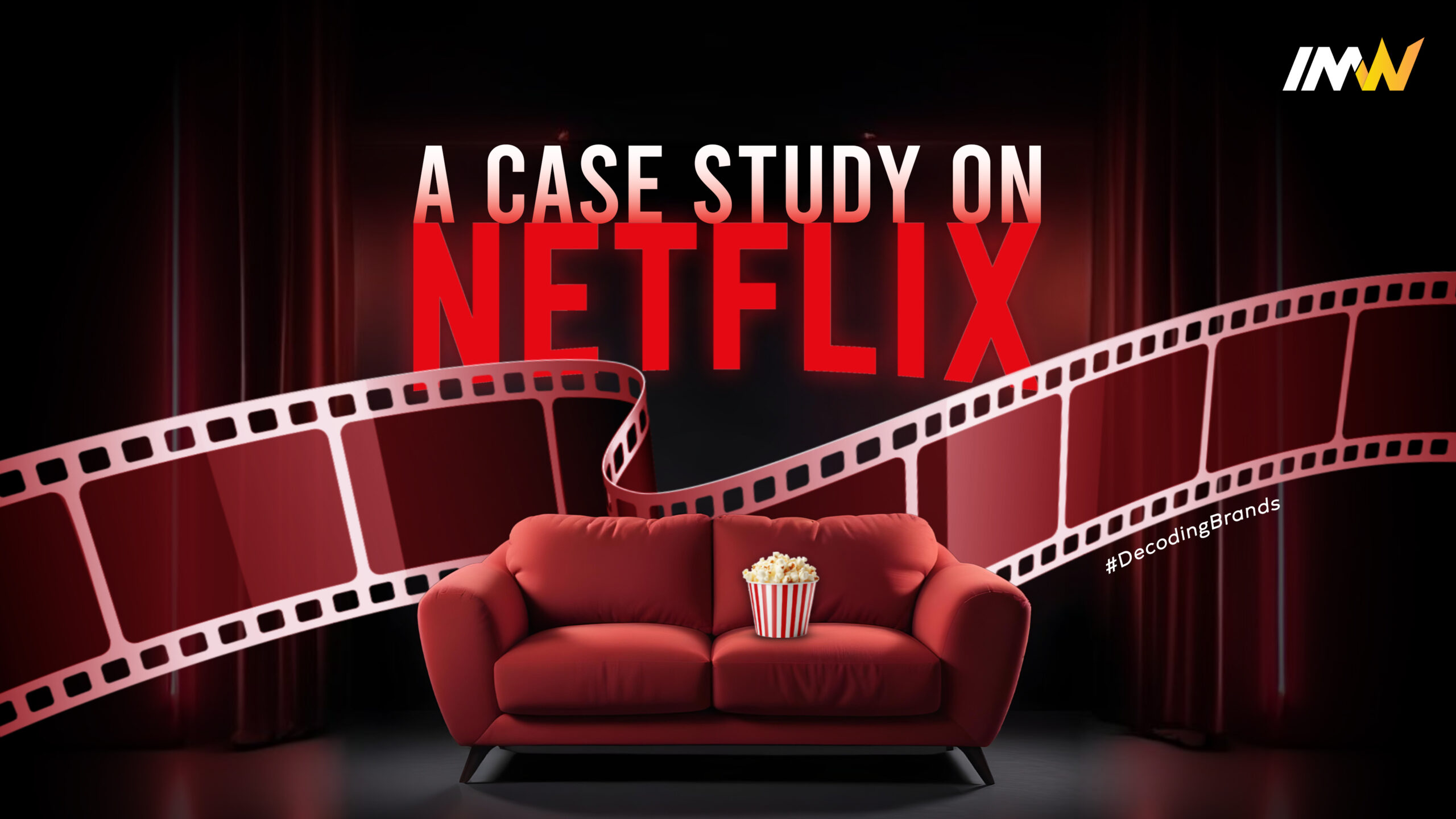Recent Posts
- Impact of Formula 1: The Fastest Lane to Modern Marketing Strategies
- Key Digital Marketing Upgrades to Watch in 2025
- 6 Best Christmas Campaigns by Top Brands
- Understanding Your Brand’s Colour Personality: The Psychology of Color in Marketing
- Bizarre Digital Marketing Trends You Won’t Believe Are Real
Recent Comments
Categories
Recent Posts
- Impact of Formula 1: The Fastest Lane to Modern Marketing Strategies
- Key Digital Marketing Upgrades to Watch in 2025
- 6 Best Christmas Campaigns by Top Brands
- Understanding Your Brand’s Colour Personality: The Psychology of Color in Marketing
- Bizarre Digital Marketing Trends You Won’t Believe Are Real
Recent Comments

Everyone loves to “Netflix and Chill.” It has slowly become a love language, symbolizing care and comfort for oneself or a partner. When it comes to date ideas, Netflix is always a top choice, providing high-quality content in the comfort of one’s home—even from the convenience of a bed. The important question is: How did Netflix become a household name? Let’s delve into Netflix’s journey and conduct a case study, driven by curiosity.
Netflix, Inc.
Netflix, Inc. marked the beginning of the Netflix journey. Founded in 1997 by Reed Hastings and Marc Randolph, the company started with a novel idea: renting DVDs by mail. Upon hearing that DVDs were being introduced in the United States in 1997, Randolph and Hastings tested the concept of selling and renting DVDs via mail. After their experiment proved successful, they decided to enter the home video sales and rental industry, launching with just 30 employees and approximately 925 titles available.
Hastings was particularly motivated to continue with the idea of Netflix after being fined $40 (INR 3,358) at a Blockbuster store for returning a copy of Apollo 13 late. Randolph and Hastings established such a remarkable business that Amazon’s founder, Jeff Bezos, offered to buy Netflix for $16 million. Although Randolph initially thought it was a fair price, Hastings refused the offer.
In 2000, Netflix suffered losses due to the dot-com bubble and even considered selling to Blockbuster for $50 million. However, in 2001, the company experienced rapid growth despite lingering effects of the bubble and the impact of the 9/11 attacks, leading Netflix to delay its IPO and lay off employees. In 2003, the United States Patent and Trademark Office granted Netflix a patent for its subscription rental service, along with several extensions. That same year, Netflix reported its first profit of $6 million.
Shift to Video-On-Demand Streaming Services
In 2007, Netflix shifted to video-on-demand services via the internet, starting with 1,000 movies. Initially, the idea was to create a “Netflix box” that would allow people to download movies overnight. However, after witnessing the success of YouTube, Netflix abandoned the hardware box concept and pursued streaming services instead. In 2008, Netflix’s database was corrupted, preventing them from shipping DVDs. The same year, Netflix discontinued its DVD business and began offering rentals on Blu-ray.
In 2010, Netflix signed a five-year contract worth roughly $1 billion to stream films from Paramount, Lionsgate, and Metro-Goldwyn-Mayer. That year also marked Netflix’s first international expansion, with Canada as its initial market.
Original Content
“Netflix Originals” refers to content developed, co-produced, or exclusively distributed by Netflix. Unlike other TV networks, Netflix funds its original shows upfront and typically orders two seasons of most series immediately upon signing a project. In 2018, Netflix released 240 new original episodes and films, with that number rising to 371 in 2019—more than the entire U.S. TV industry released in 2005. By August 2022, 50% of Netflix’s entire U.S. library consisted of original productions.
Netflix holds exclusive pay TV agreements with several studios and owns the backlog and current rights to TV shows released by Warner Bros., DreamWorks Classics, Kino International, and Walt Disney Television. Additionally, as part of a 2020 deal with Wild Bunch, the international sales distributor for Studio Ghibli, Netflix retains exclusive streaming rights to the latter’s film collection (except Grave of the Fireflies) outside the U.S. and Japan.
Games on Netflix
In July 2021, Netflix hired Mike Verdu, a former executive from Electronic Arts and Facebook, as vice president of game development, signaling its intention to introduce video games by 2022. Netflix revealed plans to release mobile games as part of its subscription packages. In November 2021, Netflix officially launched mobile games for Android users worldwide, allowing members to access games for free via the app.
Netflix Tudum
Tudum, Netflix’s book-magazine hybrid, focuses on original programs and characters, offering a unique way to engage fans through actor interviews, quizzes, puzzles, and more. Tudum began as a three-day live event, attracting over a million streams on YouTube, and evolved into an interactive digital format that seamlessly transitioned from paper to the web to the stage.
A case study on Netflix, Tudum is all about Netflix fans. Initially starting as a small fan gathering in 2020, Tudum has since grown into various forms, including an annual livestream event and a digital portal for Netflix enthusiasts. The third annual Netflix Tudum event featured a star-studded lineup, including Maitreyi Ramakrishnan and Chris Hemsworth, along with exclusive announcements, interactive experiences, and plenty of obsession-worthy moments.
Netflix Digital Marketing Strategy
Netflix takes a customer-centric approach, performing data analytics through smart content marketing. Netflix’s marketing strategy is data-driven, personalized, and customer-focused, utilizing various channels such as social media, print media, websites, YouTube, billboards, and more. The strategy is continuously updated to meet market and consumer demands, combining unique content, global accessibility, digital promotion, and subscription pricing to create a successful streaming formula.
Personalized Content
To develop long-term connections and relatability with customers, Netflix prioritizes customized marketing methods. Netflix uses push notifications in a language that resonates with its audience, sending personalized movie or series suggestions. The Netflix app displays a list of “Top Picks for [User Name],” instead of the generic “Top Picks for You,” a subtle change that significantly enhances user engagement.
Meme Marketing
One tactic Netflix uses to appeal to younger demographics is meme-based marketing. Netflix’s social media page resembles a meme page, featuring memes that promote its streaming service and are often based on its own content. These memes serve as portals for curious audiences who are eager to learn more. Memes, in this context, are interesting snippets from movies or TV scenes that capture viewers’ attention. To fully understand the meme, users are compelled to visit the streaming site and subscribe to watch the full scene.
- No Comments

